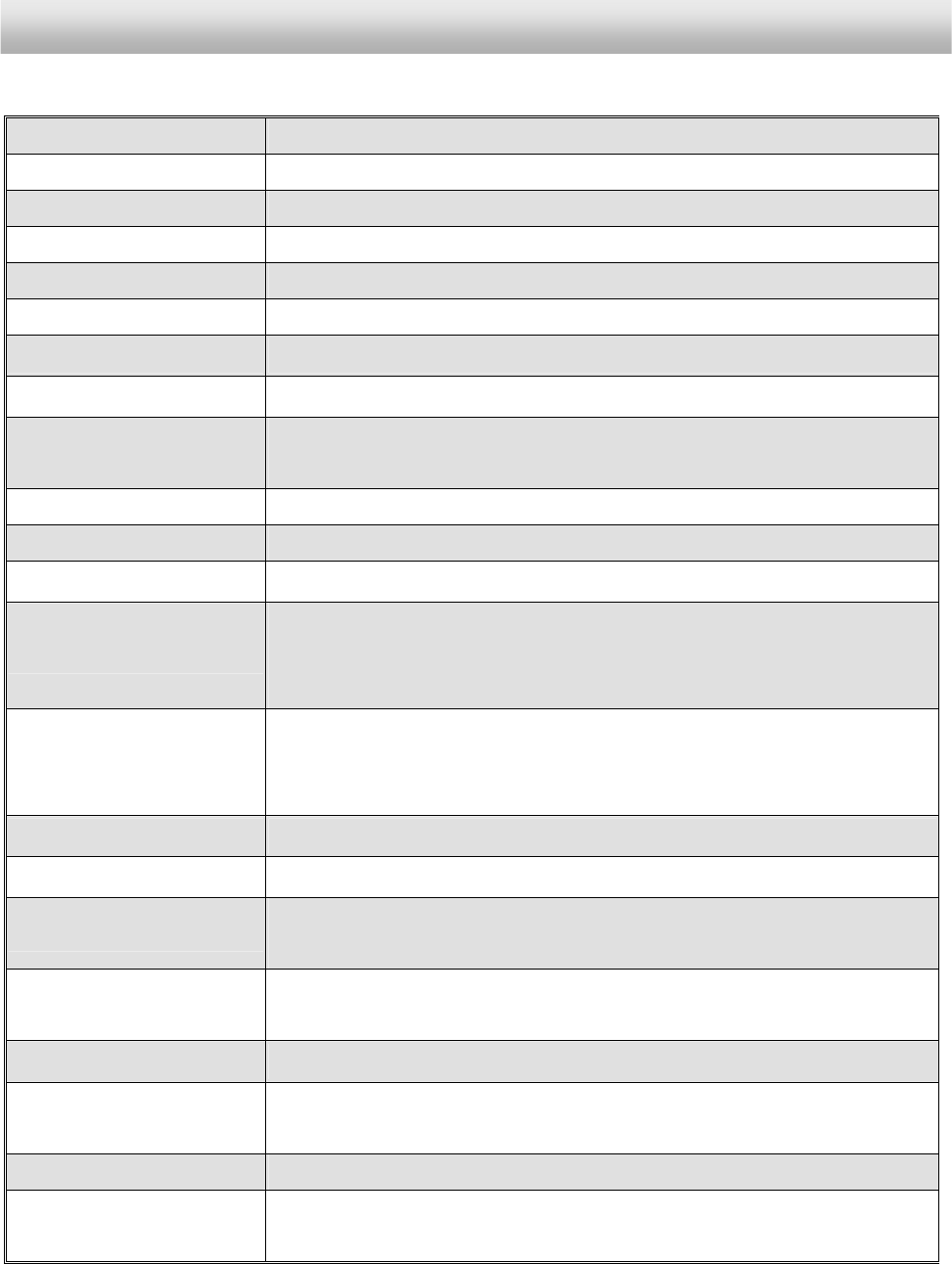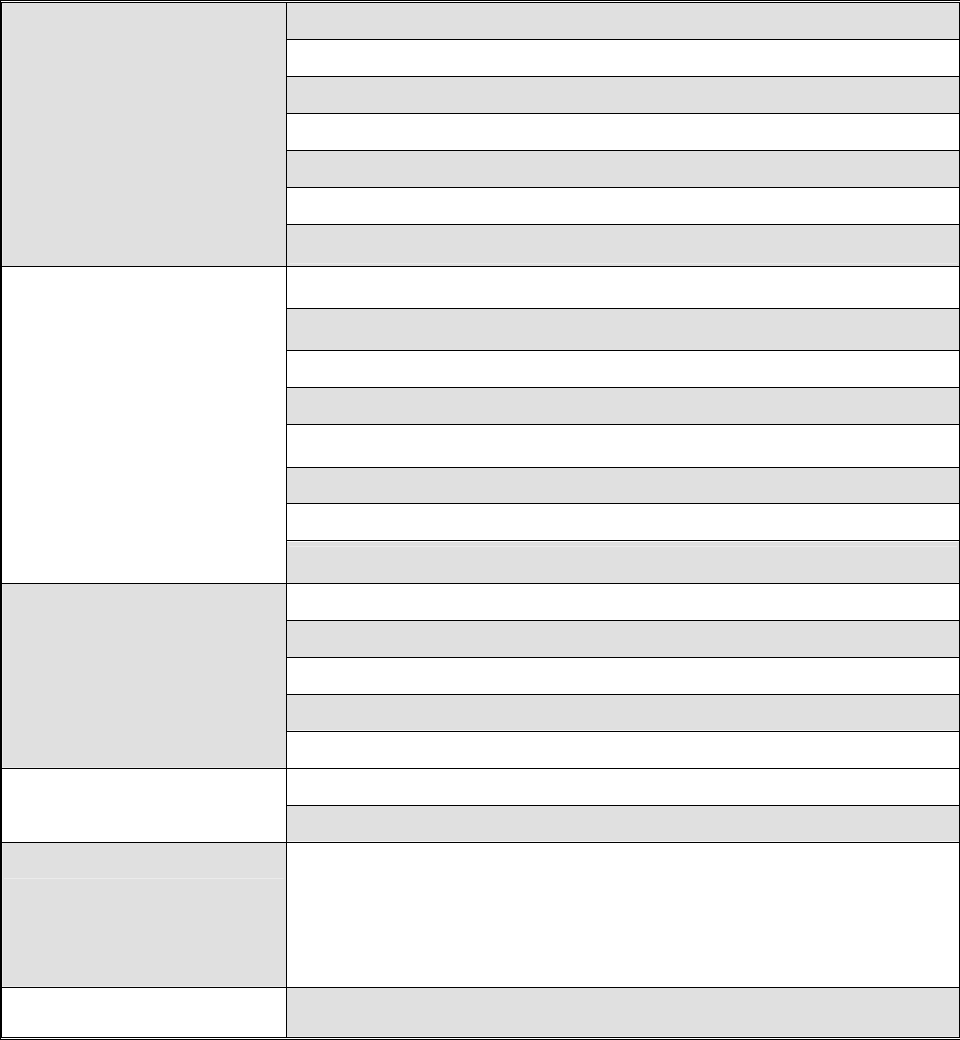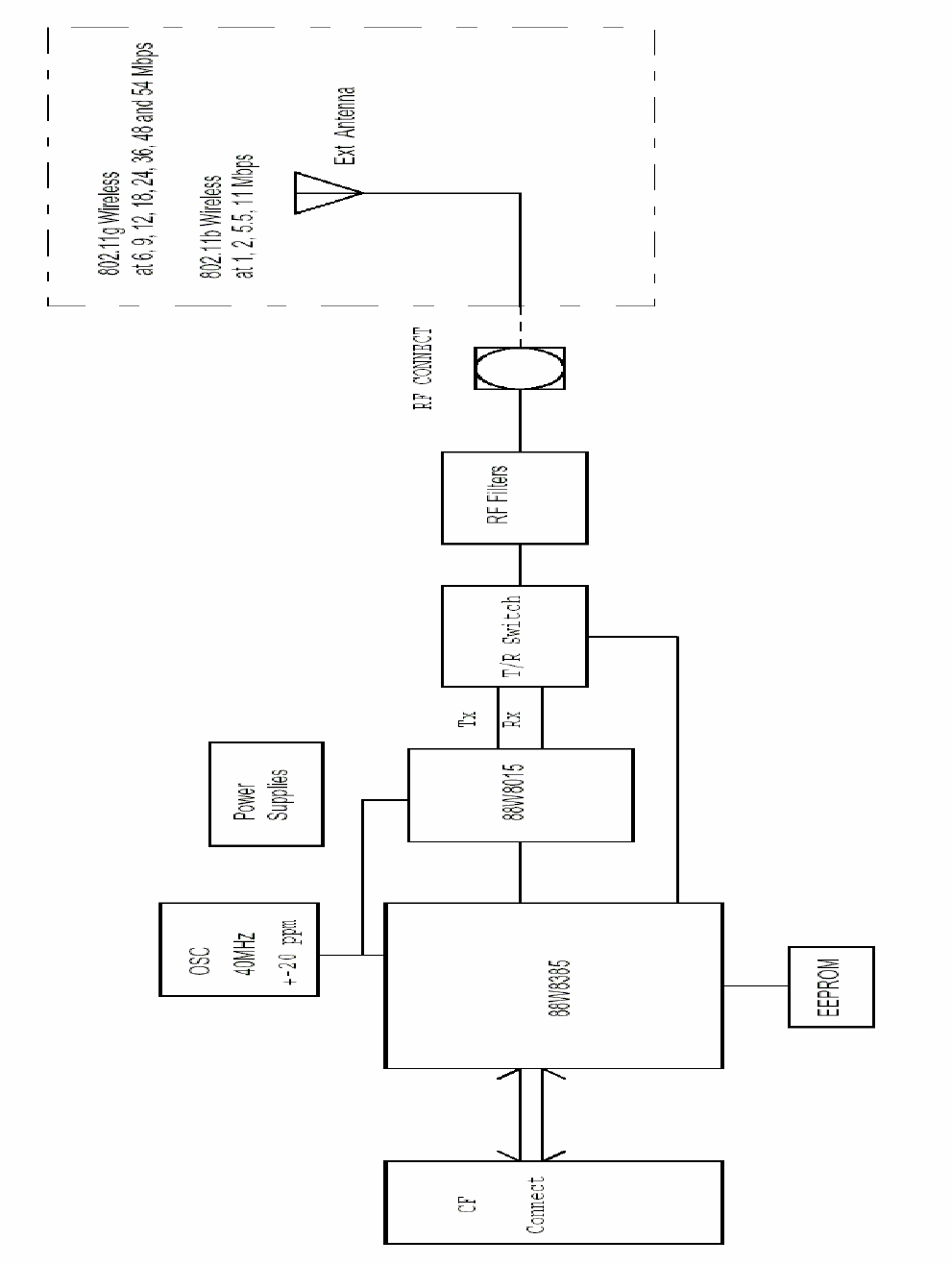Psion RA80211G 802.11b/g Wireless LAN CF Card User Manual User Guide Module rev 1
Psion Inc 802.11b/g Wireless LAN CF Card User Guide Module rev 1
Psion >
User manual rev

802.11b/g Wireless
LAN CF card
RA2040-G1
User Guide
Version 2.0
Jan.23, 2006

- 1 -
A. Specifications
Host Interfaces Compact Flash
Compatible Interfaces Compact Flash Type ǿ
Form factor Compact Flash Type ǿ
Chipset MARVELL 88W8385 + 88W8015
Operation Voltage DC 3.3V
Network Standards IEEE 802.11g/b
Modulation Techniques DBPSK, DQPSK, CCK, 16QAM, 64QAM,
Modulation Technology DSSS and OFDM
Data Rate 802.11b: 11, 5.5, 2, 1 Mbps
802.11g: 54, 48, 36, 24, 18, 12, 9, 6 Mbps
Network Architectures Infrastructure and Ad Hoc
Operating Frequencies 2.4 – 2.4835 GHz
Operating Channels 802.11b/g: 1-11 for North America
RF Output Power
Before antenna
802.11b (1M,2M,5.5M,11M) : 13 dBm
802.11g (6M,9M,12M,18M,24M,36M, 48M,54M) : 13 dBm
Receiver sensitivity
802.11b:1M=-90dBm,2M=-90dBm,5.5M=-90dBm,11M=-87dBm
802-11g:6M=-83dBm,9M=-83dBm,12M=-83dBm,18M=-83dBm,24M=-81dBm
36M=-78dBm,48M=-74dBm,54M=-73dBm
Power Consumption Tx peak: 500mA @ 3.3VDC; Rx peak: 275mA @ 3.3VDC
Support Voltage 3.3V
Security
z WEP 64-and 128-bit encryption with hardware TKIP processing.
z WPA
Delay Tolerance Multi-path R.M.S Delay Spread @ 10%FER
680 ns in 11M mode,150ns in 54M mode
Software Support Windows CE 4.2 & CE 5.0,.Linux
Temperatures
Operates from -20 to 70 к
Storage from -40 to 120 к
Humidity (non-condensing) 5 to 95%*
Certifications
Wi-Fi Pretest*; FCC part 15C/15.247*; ETS 300 328-2*; UL*; IEC60950*; EN 301
489-1,17*; prEN50371*;CE Mark*; TELEC*
*Perform approved procedure is based on customer’s request.
WLFWire
Wireless CF Card_RA2040-G1 Design Specification Rev.6

- 2 -
B. Marvell WLAN 802.11b/g CF8385PN Software Feature
Short preamble
802.11b, 802.11g, and g/b mix-mode infrastructure
802.11b and 802.11g Adhoc mode
Transmit fragmentation and receive defragmentation
Client IEEE Power Save Infrastructure & Adhoc mode
Basic rate adaptation - 11g/b for optimizing each STA throughput
Core Features
Background scan
64/ 128-bit WEP Encryption and open/ shared authentication
WPA PSK
WPA 802.1x
WPAII PSK**
WPAII 802.1x**
Cisco CCX V1 (LEAP)**
Hardware AES
Security
AH Security
IEEE 802.11b
IEEE 802.11g
IEEE 802.11d**
IEEE 802.11e (EDCA)**
IEEE Standards
IEEE 802.11e (HCCA)**
Wi-Fi WME**
Other Standards Wi-Fi WSM APSD**
Drivers for the following
Operating Systems
Windows CE.net (CE4.2, CE5.0)
Windows Pocket PC 2003
Windows Mobile Edition
Linux 2.4.22 and above
Network Protocol TCP/IP, IPX
** NOTE **
The transmitter module is authorized for use in specific End-product (WORKABOUT PRO
Hand-held Micro-computer as models of 7525C, 7525M-E and 7525S).

- 3 -
C. Block Diagram
***Subject to be changed without notice.
Federal Communication Commission Interference Statement
This equipment has been tested and found to comply with the limits for a Class
B digital device, pursuant to Part 15 of the FCC Rules. These limits are
designed to provide reasonable protection against harmful interference in a
residential installation. This equipment generates, uses and can radiate radio
frequency energy and, if not installed and used in accordance with the
instructions, may cause harmful interference to radio communications.
However, there is no guarantee that interference will not occur in a particular
installation. If this equipment does cause harmful interference to radio or
television reception, which can be determined by turning the equipment off and
on, the user is encouraged to try to correct the interference by one of the
following measures:
- Reorient or relocate the receiving antenna.
- Increase the separation between the equipment and receiver.
- Connect the equipment into an outlet on a circuit different from that
to which the receiver is connected.
- Consult the dealer or an experienced radio/TV technician for help.
This device complies with Part 15 of the FCC Rules. Operation is subject to the
following two conditions: (1) This device may not cause harmful interference,
and (2) this device must accept any interference received, including
interference that may cause undesired operation.
FCC Caution: Any changes or modifications not expressly approved by the
party responsible for compliance could void the user's authority to operate this
equipment.
IMPORTANT NOTE:
FCC Radiation Exposure Statement:
This equipment complies with FCC radiation exposure limits set forth for an
uncontrolled environment.

This device is intended only for Psion Teklogix Inc’s 7525C, 7525M-E and
7525S Series PDA or Psion Teklogix Inc’s platforms with substantially
similar physical dimensions, construction, and electrical and RF
characteristics under the following conditions:
1) The transmitter module may not be co-located with any other transmitter
except Bluetooth device FCC ID: GM37525BTB which has been certified
with this product.
2) Product can be sold only to end-user who already has the Psion
Teklogix Inc’s products, or be used in Psion Teklogix’s product lines
as mentioned above. The product shall not be marketed at public
retail stores.
Psion Teklogix Inc is responsible for testing their end-product for any
additional compliance requirements required with this module installed (for
example, digital device emissions, PC peripheral requirements, etc.).
IMPORTANT NOTE: Please notice that this product is only for Psion’s 7525C,
7525M-E and 7525S Series PDA or Psion’s platforms with substantially similar
physical dimensions, construction, and electrical and RF characteristics. The
usage of this product in other application may cause violation to US/Canada
EMC or RF exposure rules and is prohibited.
End Product Labeling
The final end product must be labelled in a visible area with the following:
“Contains TX FCC ID: GM3RA80211G”.
Manual Information That Must be Included in End-Product
End-users must be provided with specific information required to satisfy RF
exposure compliance for the final host device.
The transmitter module must not be co-located or operated in conjunction with
any other transmitter or antenna not described in application filings under this
FCC ID: GM3RA80211G.
As long as the conditions mentioned above are met, further transmitter tests
will not be required. However, the grantee shall bear the responsibility for
compliance of the device in all final host configurations.
IMPORTANT NOTE: If the conditions mentioned above cannot be met,
then the FCC authorization is no longer considered valid and the FCC ID
cannot be used on the final product. Under the circumstances, the grantee will
be responsible for re-evaluating the end product (including the transmitter) and
obtaining a separate FCC authorization.